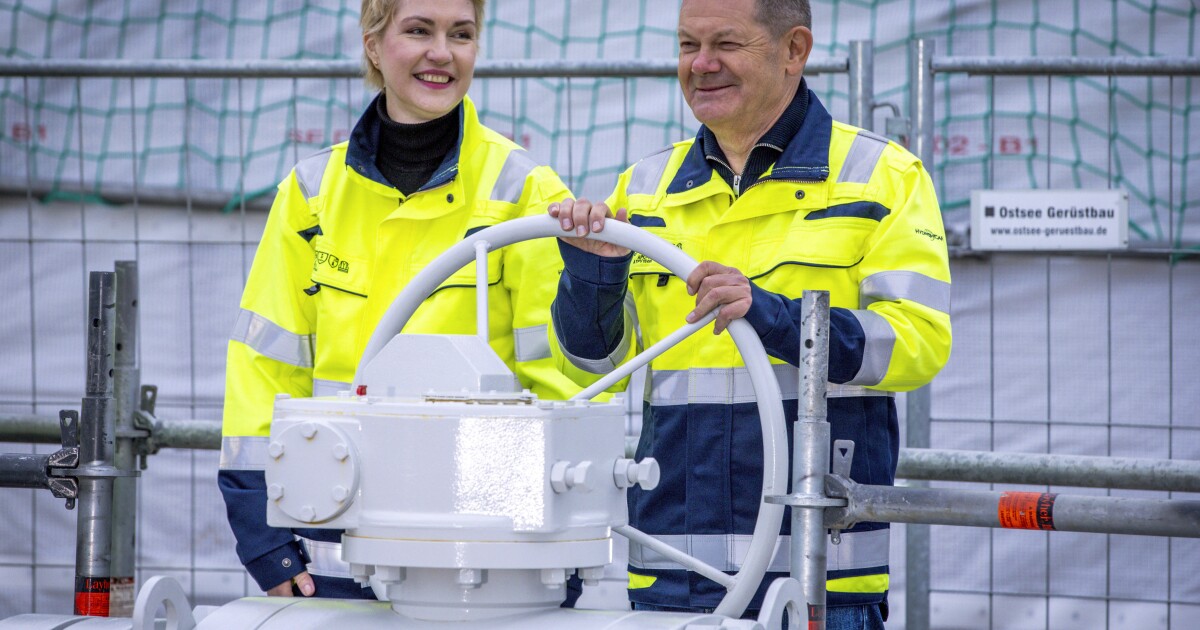

Buyers from across Europe are turning to long-term supply deals with U.S. liquefied natural gas exporters to mitigate an energy crisis.
The trend shows how countries are moving past earlier wariness to enter long-term gas agreements due to their commitment to achieving net-zero greenhouse gas emissions.
NATURAL GAS IS GETTING THE EMBRACE THE INDUSTRY LONG SOUGHT
The war in Ukraine fractured the well-established trade relationship between the European Union and Russia, which had been its top natural gas supplier and was expected to remain so as long as the continent needed the fuel.
Since the invasion, the Europeans have been buying up more spot shipments of liquefied natural gas from the U.S., which led the world in 2022, to replace diminishing imports from Russia. Buyers there are now showing more interest in long-term agreements with in-the-works LNG projects that in some cases provide for deliveries for two decades.
Europe overtook Korean and Japanese markets as the top U.S. LNG export destination last year, and while much of the new long-term supply deals U.S. suppliers agreed to in 2022 involved Asian firms, according to Natural Gas Intel, the pace has picked up among European buyers.
At least five long-term supply and purchase agreements have been announced between U.S. LNG suppliers and European buyers since November.
Energy infrastructure developer Sempra Infrastructure most recently announced it had entered into a long-term LNG sale and purchase agreement with Polish energy company PKN ORLEN S.A. The 20-year agreement, announced on Wednesday, will be served by Sempra’s Port Arthur LNG Phase 1 project currently under development in Jefferson County, Texas.
It’s one of a handful of agreements Sempra notched in recent months committing future shipments from phase one of its Port Arthur export terminal, which is expected to begin shipping LNG in 2027.
The company announced long-term agreements with British multinational Ineos, French energy company ENGIE, and Germany’s RWE Supply & Trading covering 20 years, 15 years, and 15 years respectively.
Galp, a Portuguese energy company, announced its own 20-year LNG sales and purchase agreement in December with NextDecade Corporation, whose planned Brownsville, Texas, export terminal is expected to begin operations in 2027.
Fred Hutchison, president and CEO of the U.S. LNG Association, said the new agreements illustrate a recognition in Europe of the value of American LNG for providing energy security, as well as the financial realities behind a new gas liquefaction and export terminal, where emerging suppliers aren’t interested in short-term deals.
“You can’t finance these without 15 to 20-year deals,” Hutchison told the Washington Examiner. “We’re seeing more 15-year deals, but it’s clear that it’s the 15-20 year deals that are the key to unlocking financing.”
The gang of new contracts has been backed up with commitments by European governments to build more natural gas infrastructure to acquire and move gas, an approach adopted alongside more aggressive goals to build renewable energy resources.
The Biden administration has pledged to help facilitate more shipments of LNG to Europe through at least 2030, a promise President Joe Biden made after the war in Ukraine began, and it has expanded LNG export authorizations at both operating facilities and facilities that have been approved but remain at various stages of construction.
Biden and European governments have been criticized widely by environmentalists and some lawmakers, who consider the policies as transgressing their commitments to mitigating climate change.
The U.S. has been able to increase LNG shipments to Europe this year largely by redirecting volumes produced at existing facilities away from Asia as opposed to bringing lots of new liquefaction and export capacity online.
There’s a limit as to what the U.S. can do now to continue increasing shipments without new export facilities, said Charlie Riedl, executive director for the Center for Liquefied Natural Gas.
“We’re not going to see any new [U.S.] LNG this year — not exactly the news that the rest of the world is looking for, but it is the reality of how markets work in LNG,” Reidl said.
“They’re going to be looking for more natural gas in the next couple of years, but LNG projects are not built overnight,” he added.
The new U.S.-European supply agreements previously noted involve facilities that have yet to be constructed and are years away from completion.
CLICK HERE TO READ MORE FROM THE WASHINGTON EXAMINER
Hutchison said he expects more supply deals to be announced in coming weeks and months and said as parties continue to ink contracts, he expects slow movers will be lured from the sidelines to also make deals.
“I think as more of these projects get contracts, irrespective of whether it’s from Europe or some other part of the world, everybody else that’s out there that’s been on the fence realizes that there’s not an infinite list of U.S. LNG projects,” he said.




